Geysers and hot springs of the European mainland and its coastal islands
Hot springs are generated by tectonic or volcanic processes. And most volcanoes are to be found along the tectonic plate boundaries. To be more specific, volcanism in Continental Western Europe (including coastal islands) can mainly be attributed to the subduction or sinking of the African lithosphere (Oceania) below the Eurasian plate. Therefore, Greece has a long history of volcanic eruptions, but the most active hot spots are currently to be found in Italy.
They are focused on four main clusters, two of which are encompassing islands offshore the southwestern coast of Italy. One cluster, featuring submarine activity, is located southwest of Sicily around the Mediterranean island of Pantelleria. The other, far more popular one is centered around a hot spot northeast of Sicily and includes the active stratovolcanoes Mount Etna, Stromboli and Vulcano, the namesake of all volcanoes.
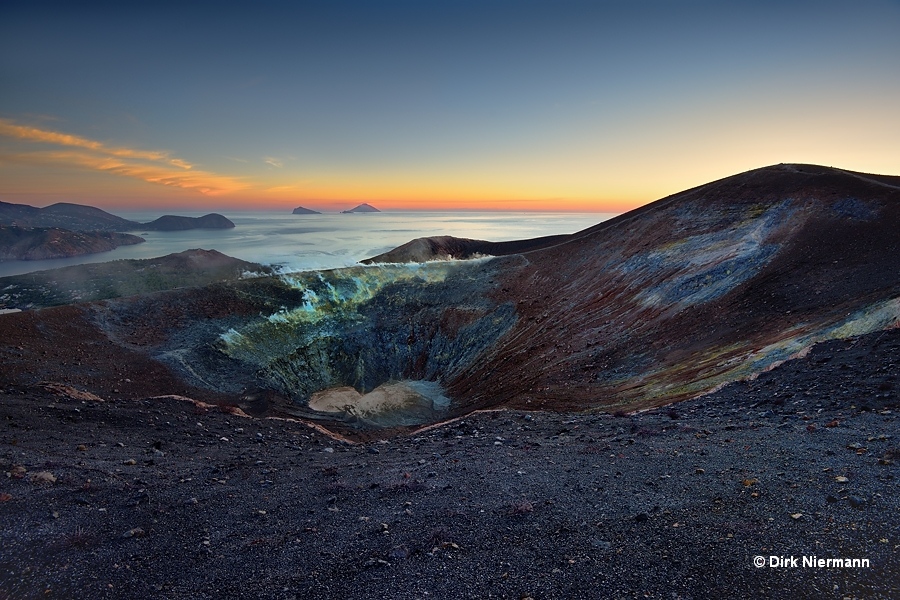
The last eruption of the Gran Cratere della Fossa, the youngest vent on Vulcano, dates back to 1890, but according to the definition a volcano is regarded as active if it has erupted in the last 10,000 years, so Vulcano is an active volcano. This is even more true for its neighbor Stromboli, erupting more or less permanently steam and lava / ash from different craters on the summit.
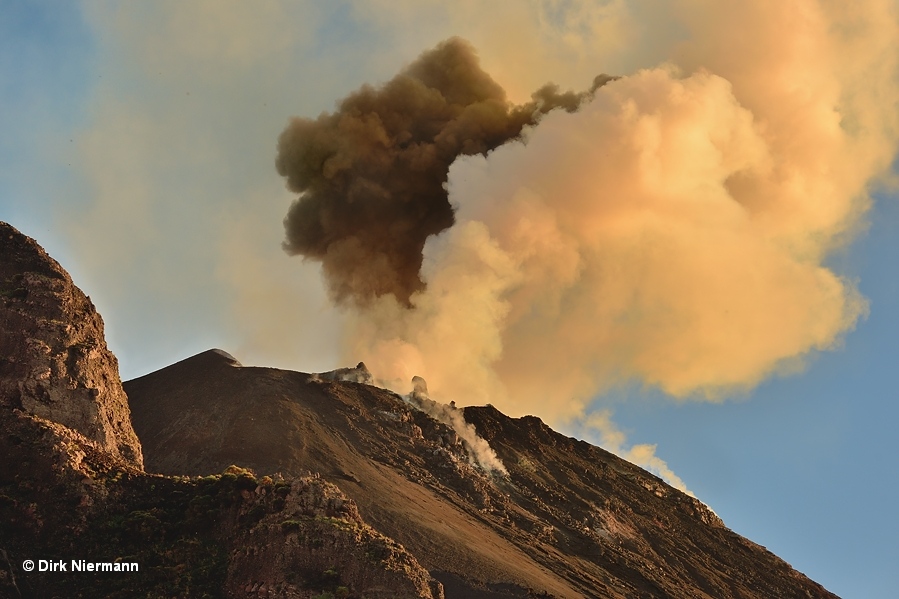
Almost like Stromboli the largest volcano of the cluster, Mount Etna, is frequently active, but it often generates new vents on its summit and its widely extending slopes because many fissures, dykes and faults form pathways for intruding magma. Therefore, Mount Etna hosts more than 300 separate craters, and the number will still increase in future.
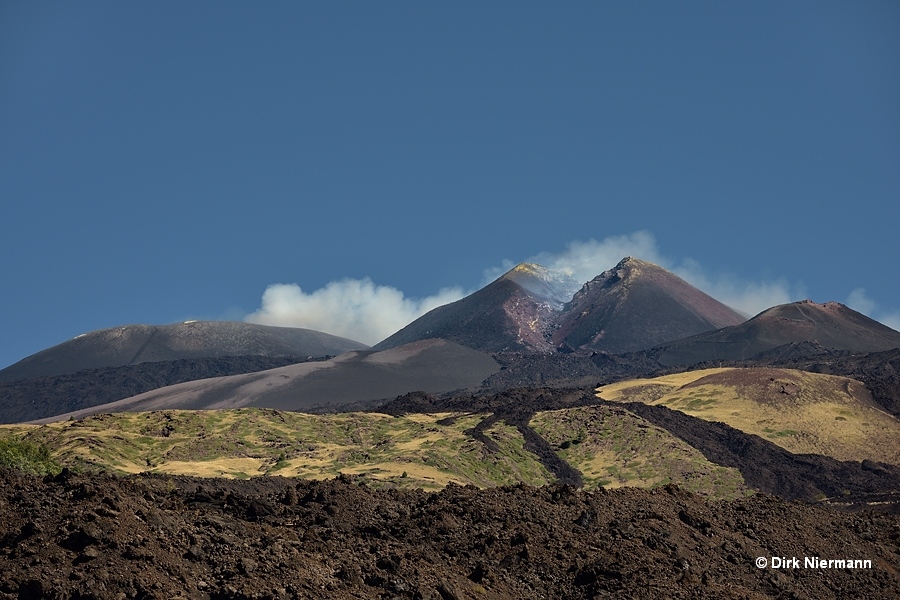
All volcanoes presented so far are mainly accompanied by fumaroles, whereas clear or muddy hot springs are scarcely to be found in their vicinity, and no geysers are known. Examples are the exceptional submarine fumaroles of the spiaggia delle acque calde (hot water beach) in Vulcano Porto, the largest village on Vulcano. They are releasing hot, sulfur rich volcanic gases into the shallow waters of the beach where bathers may come into direct contact with the smaller ones, while larger fumaroles are fenced off.
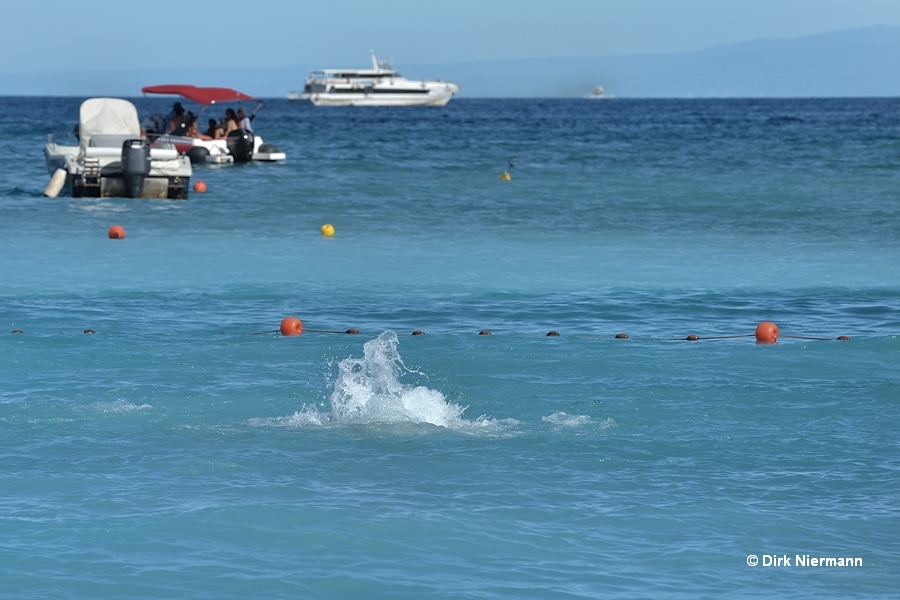
The remaining two of the volcanic clusters mentioned above are located on the Italian mainland: a line of mostly extinct volcanoes along the Italian west coast in the regions Toscana and Lazio north of Rome, and south of Rome the volcanoes around Napoli. Latter are forming the Campanian volcanic arc and most have to be classified as dormant. Two of them, the Vesuvio and the Campi Flegrei (Phlegraean Fields), are officially even considered as active and may erupt at any time.
The last eruption of Monte Vesuvio (Mount Vesuvius) occurred in 1944. Due to its different eruption styles, encompassing violent explosions or pyroclastic flows as well as the emission of very liquid lava, lava fountains and formation of lava lakes, this volcano is still further from being predictable than many others. Monte Vesuvio has proven its dangerous nature with the destruction of the ancient towns of Pompeii and Herculaneum, and it's an even bigger threat to the densely polulated region of Napoli today.
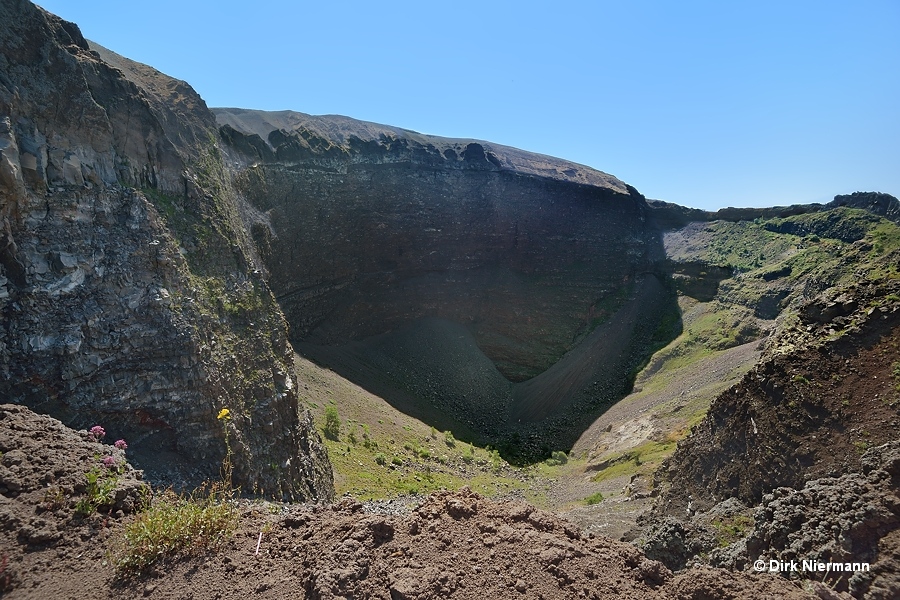
When it comes to natural hot springs, however, the closer region around Monte Vesuvio has not much to offer. Hot springs, mud pots, and fumaroles are far more abundant on the adjacent caldera of the supervolcano Campi Flegrei or farther north, in Toscana (Tuscany).
Besides Italy and Greece, also more central regions of the European mainland have developed volcanoes by the plate collision or by ascending volcanic mantle plumes. Most of them are extinct now and the only remains are geological deposits, but some are still active in terms of volcanic heat accumulations in the deep. Examples are the Auvergne region in France, the Vulkaneifel and the Oberpfalz in Germany, and the Bohemian Massif in the Czech Republic. In these regions the requirements for volcanic springs are met and, consequently, those features are to be found.